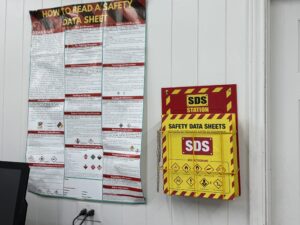Introduction
A Hazardous Area Classification (HAC) is a focused risk assessment designed to identify locations where flammable materials may form explosive atmospheres. The goal is to implement control strategies that eliminate or minimize ignition sources in these areas.
In North America, HAC studies are guided by the National Electrical Code (NEC) and relevant NFPA standards, while ATEX directives apply in the European Union. These classifications ensure that equipment and operational procedures are appropriate for potentially explosive environments, including areas with combustible dust or flammable vapors.
While traditionally used to assess electrical ignition risks, HAC now also covers non-electrical ignition sources, making it a vital tool for comprehensive risk management.
Step 1: Define the Scope and Objectives
The first step in conducting a hazardous area classification is defining the objectives and scope of the study.
Objectives:
-
Identify potential hazardous zones where explosive atmospheres could exist.
-
Classify these zones by frequency and duration of risk.
-
Ensure compliance with standards such as NFPA 70 (NEC), NFPA 497, NFPA 499, and OSHA regulations.
Scope:
-
Identify relevant processes, equipment, and materials.
-
Focus on areas where flammable gases, vapors, or combustible dust are produced or handled.
Step 2: Gather Information
A comprehensive understanding of your facility’s materials and operations is essential.
Key Data to Collect:
-
Material properties: Combustibility, ignition temperature, Minimum Ignition Energy (MIE).
-
Process parameters: Temperatures, flow rates, and pressures.
-
Historical data: Incident reports, inspection results, and safety audits.
This information forms the basis for identifying potential sources of explosive atmospheres.
Step 3: Identify Potential Sources of Release
Flammable materials can be released under normal and abnormal conditions. Identifying both scenarios ensures a complete assessment.
-
Normal operation: Dust release during mixing, vapor release from seals or vents.
-
Abnormal conditions: Leaks, equipment failures, or emergency vents during overpressure events.
This step evaluates where and how hazardous materials may become airborne.
Step 4: Assess the Extent of Hazardous Classification
Hazardous areas are classified by type and likelihood of exposure.
Classifications under the NEC/NFPA system:
-
Class I (Gas/Vapor)
-
Division 1: Frequent presence of flammable gases during normal operations.
-
Division 2: Flammable gases present only in abnormal conditions.
-
-
Class II (Dust)
-
Division 1: Combustible dust in the air under normal conditions.
-
Division 2: Dust only present during malfunction or infrequent operations.
-
-
Class III (Fibers/Flyings)
-
Division 1: Ignitable fibers regularly handled or processed.
-
Division 2: Fibers present in storage or infrequently.
-
Factors to Consider:
-
Ventilation effectiveness
-
Environmental conditions (temperature, humidity)
-
Containment measures in place
Step 5: Determine the Size of the Hazardous Area
Once classified, the next step is determining how far the hazardous zone extends.
-
Use release rate estimates and dispersion models to calculate distances.
-
Define horizontal and vertical boundaries around release points.
-
Account for adjacent areas that may also be affected by dispersion.
Accurate zoning ensures that safety measures cover all high-risk spaces.
Step 6: Document the Hazardous Areas
Clear documentation is key for internal audits, regulatory inspections, and engineering design.
-
Create hazardous area classification drawings showing all zones.
-
Include annotations and notes explaining the basis for each classification.
-
Develop a comprehensive report with data, calculations, and references.
This documentation serves as a reference point for all future safety planning.
Step 7: Implement Control Measures
Once areas are classified, implement appropriate safety controls to minimize ignition risk.
Engineering Controls:
-
Dust collection systems to prevent airborne dust buildup.
-
Ventilation systems to disperse vapors and prevent accumulation.
-
Explosion venting or suppression systems to relieve pressure in case of ignition.
-
Isolation and enclosure systems to contain releases.
Administrative Controls:
-
Routine housekeeping to minimize dust accumulation.
-
Preventive maintenance of equipment and safety systems.
-
Training programs to increase worker awareness and preparedness.
-
Safety protocols for hot work, material handling, and emergency response.
Personal Protective Equipment (PPE):
-
Use of respirators, dust masks, and flame-resistant clothing as needed based on the hazard level.
Step 8: Review and Update Classifications
Hazardous area classifications are not one-and-done. They must be kept current.
-
Conduct regular audits to verify existing zones are still valid.
-
Update classifications when processes, materials, or equipment change.
-
Review incidents or near-misses to identify overlooked hazards.
This ongoing process ensures the classification remains accurate and effective.
Conclusion
Conducting hazardous area classifications is a foundational safety practice for any facility handling flammable gases, vapors, or combustible dust. By systematically assessing, documenting, and controlling ignition risks, companies can not only meet compliance requirements but also build safer, more resilient operations.
At Prime Process Safety Center, we support industries with expert HAC studies, risk assessments, and compliance consulting. Our goal is to help you minimize risk, protect personnel, and maintain operational integrity in potentially explosive environments.















